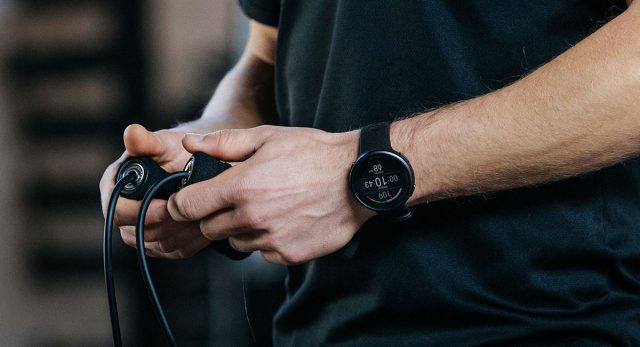When it comes to training, there are terms everyone knows – like VO2max or chafing – and then there are the ones that get tossed around in conversation but, to be honest, most people don’t fully understand. No shame, just case in point: aerobic threshold vs. anaerobic threshold.
We may throw these words into conversation with our fit-minded friends from time to time – “Hey, does your coach have you doing much aerobic threshold work this season?” – but what do they actually mean, why does it matter, and what should you expect when it shows up on your training plan?
Let’s break it down. Here’s what athletes should understand about aerobic threshold.
What is aerobic threshold?
Generally speaking, your aerobic threshold (AT) is a steady-state effort that you could perform for hours. If you’re working out in an aerobic range, your breathing will be light, and you should feel like you can keep moving for hours.
In more science-specific terms, AT is where the level of lactate in the blood first starts to rise, and the level of effort at which anaerobic energy pathways start helping out with energy production.
What Is Aerobic Threshold training?
When you’re aiming to improve your aerobic threshold, the key is to emphasize low-intensity training. Those longer steady-state workouts on your training plan – like long runs, long rides, or steady efforts in the pool – are AT workouts.
“For these workouts, your goal is to stay comfortably burning oxygen and sustaining a specified effort for a longer period of time,” says Anthony Baugh, NASM CPT, PES, CES, cyclist, Ironman, and trainer at Independent Training Spot in New York City.
One tried-and-true way to measure whether you’re staying in your aerobic threshold zone is to keep an eye on your heart rate
One tried-and-true way to measure whether you’re staying in your AT zone is to keep an eye on your heart rate and make sure it remains in the steady, moderate effort zone for the duration of your workout.
If you have an aerobic-specific workout on your plan, consider intervals and HIIT sessions off the table.
Why should I WOrk On MY aerobic threshold?
For endurance athletes, having an increased aerobic threshold is key for being able to go longer and further.
A higher AT allows you to train at higher intensity without lactate building up – in practice, this means you can keep going at a higher intensity for a longer time.
“Every athlete benefits from doing both aerobic and anaerobic workouts,” says Baugh. “The key is balance. People usually stick to what they’re good at, or they solely train to simulate the event in which they’re working toward.”
If you’re training for a longer event, it’s important to still include short, intense interval workouts to help your body become more efficient at burning oxygen. And for shorter efforts, having a great aerobic base will help you recover faster between intervals.
What is a good aerobic threshold?
Everyone’s aerobic threshold is different. Your individual aerobic fitness level determines your heart rate on the AT so there isn’t one specific optimal threshold.
For example, the AT of people with poor aerobic fitness may be at 60% of their HR max, whereas the AT of trained athletes may be at 85% of their HR max.
So how do I Determine my aerobic threshold?
“The easiest way to determine if you’re in your aerobic energy system is to see how long you can sustain your effort. If you’re unable to maintain your effort for longer than three minutes, your body has probably gone anaerobic,” says Baugh.
So, if you’re out for a run and have to drastically alter your pace within three minutes, you’re no longer working out in the aerobic zone.
By the numbers, subtract 30 beats per minute from your lactate threshold heart rate, and that’ll give you a rough estimate of your aerobic threshold. But beyond the data, it’s the feeling at which the intensity of your workout and effort is just slightly above resting level.
A more specific method to find out what your aerobic threshold is an exercise test where the intensity level increases step by step and the changes in the lactate concentration of your blood is monitored with blood samples.
Your aerobic and anaerobic thresholds can also be determined with an exercise test while wearing a mask that measures your oxygen intake and the amount of CO2 in your exhale.
If you liked this post, don’t forget to share so that others can find it, too.
Or give it a thumbs up!
I like this article
Please note that the information provided in the Polar Blog articles cannot replace individual advice from health professionals. Please consult your physician before starting a new fitness program.





